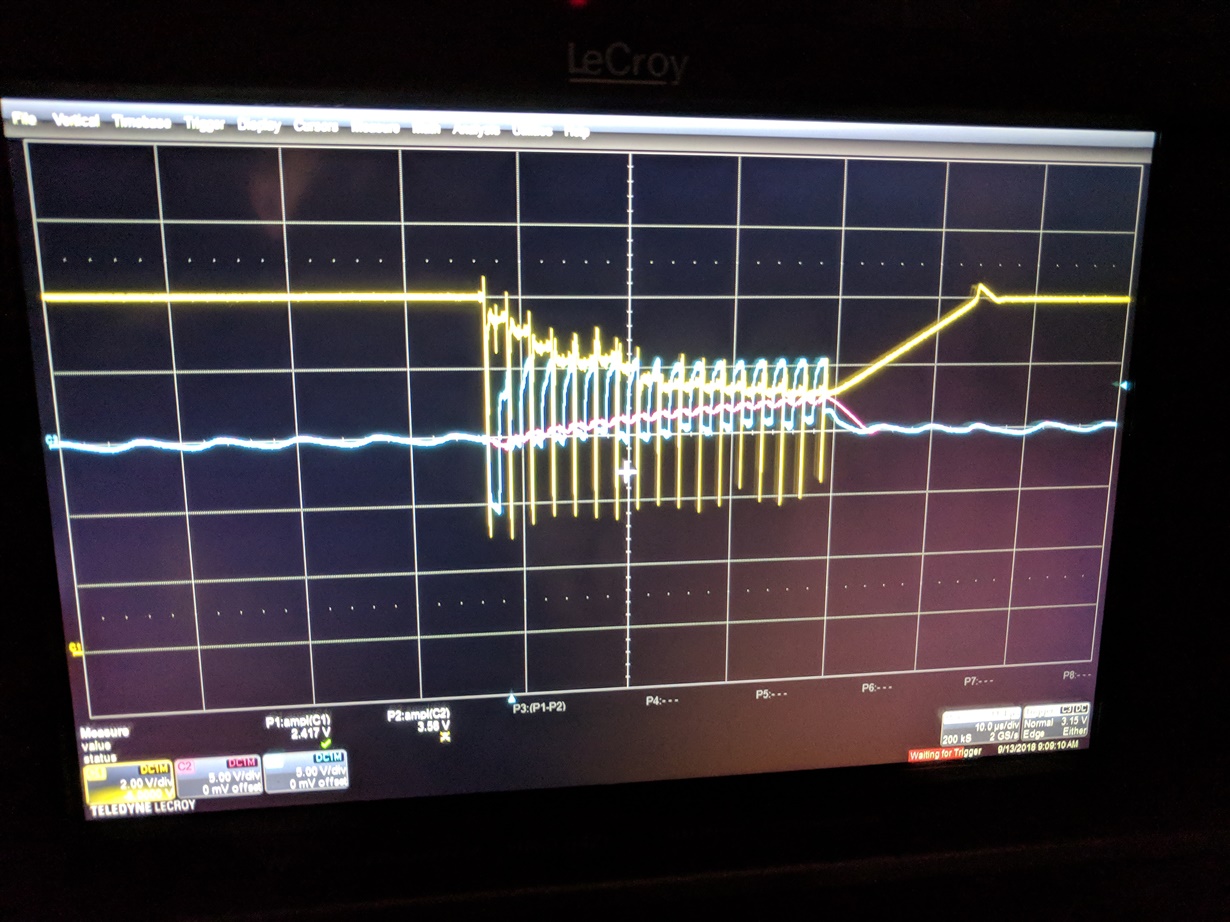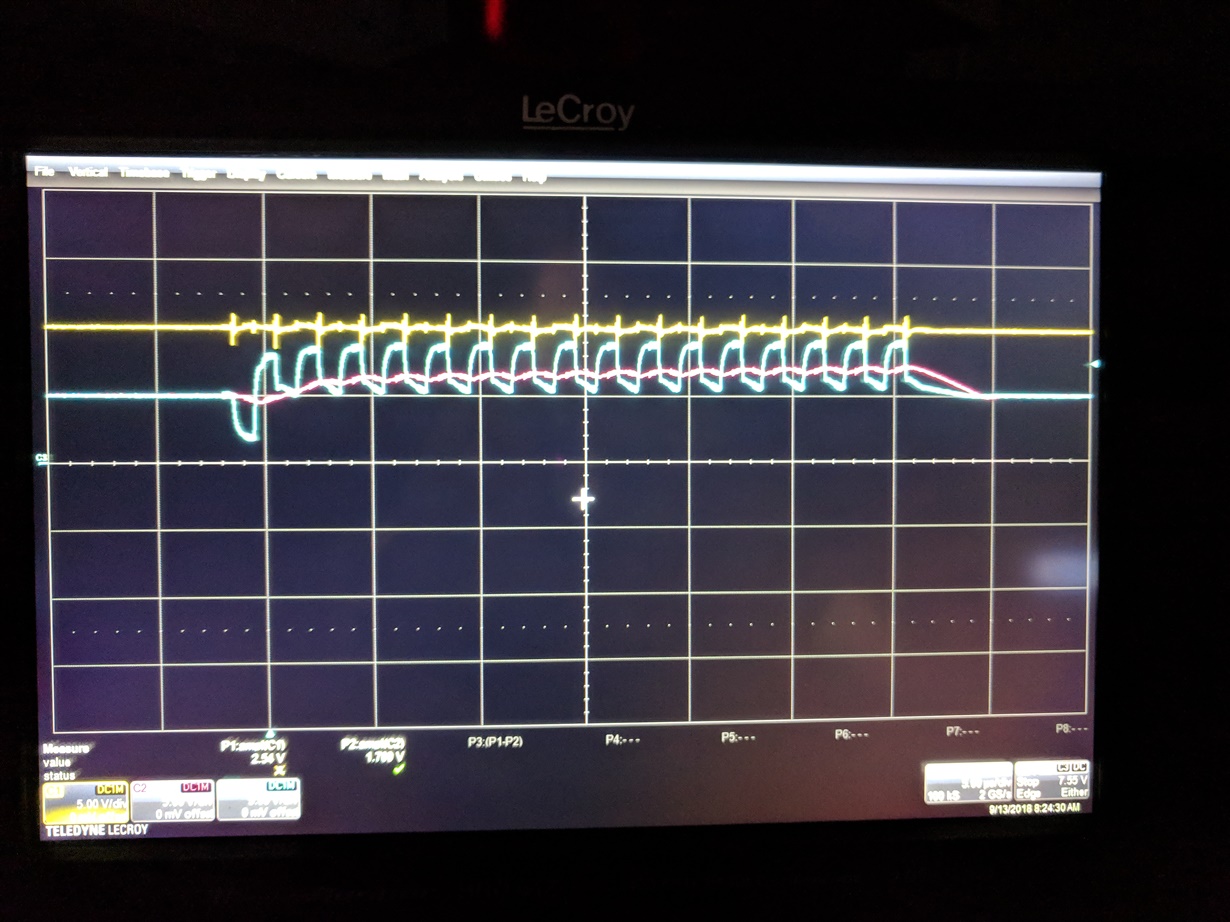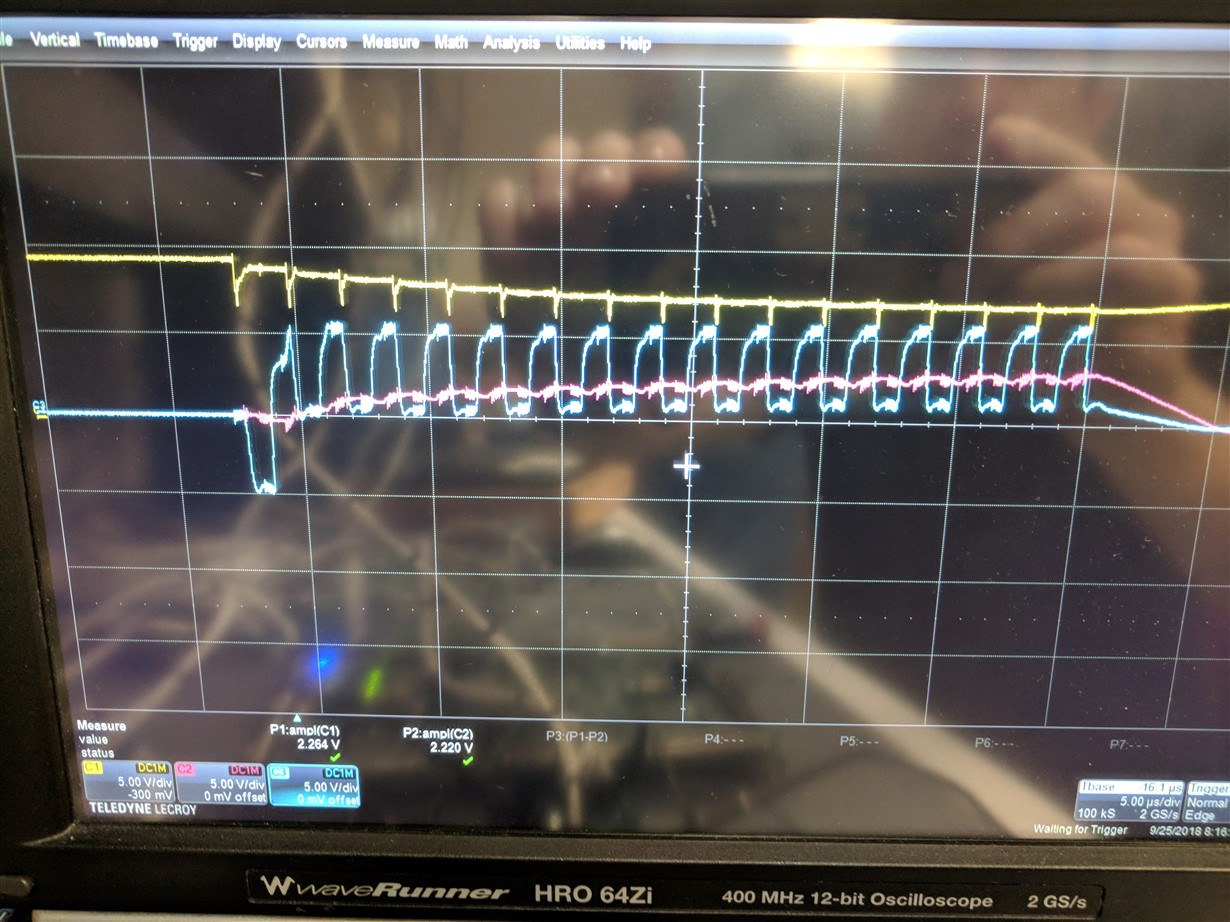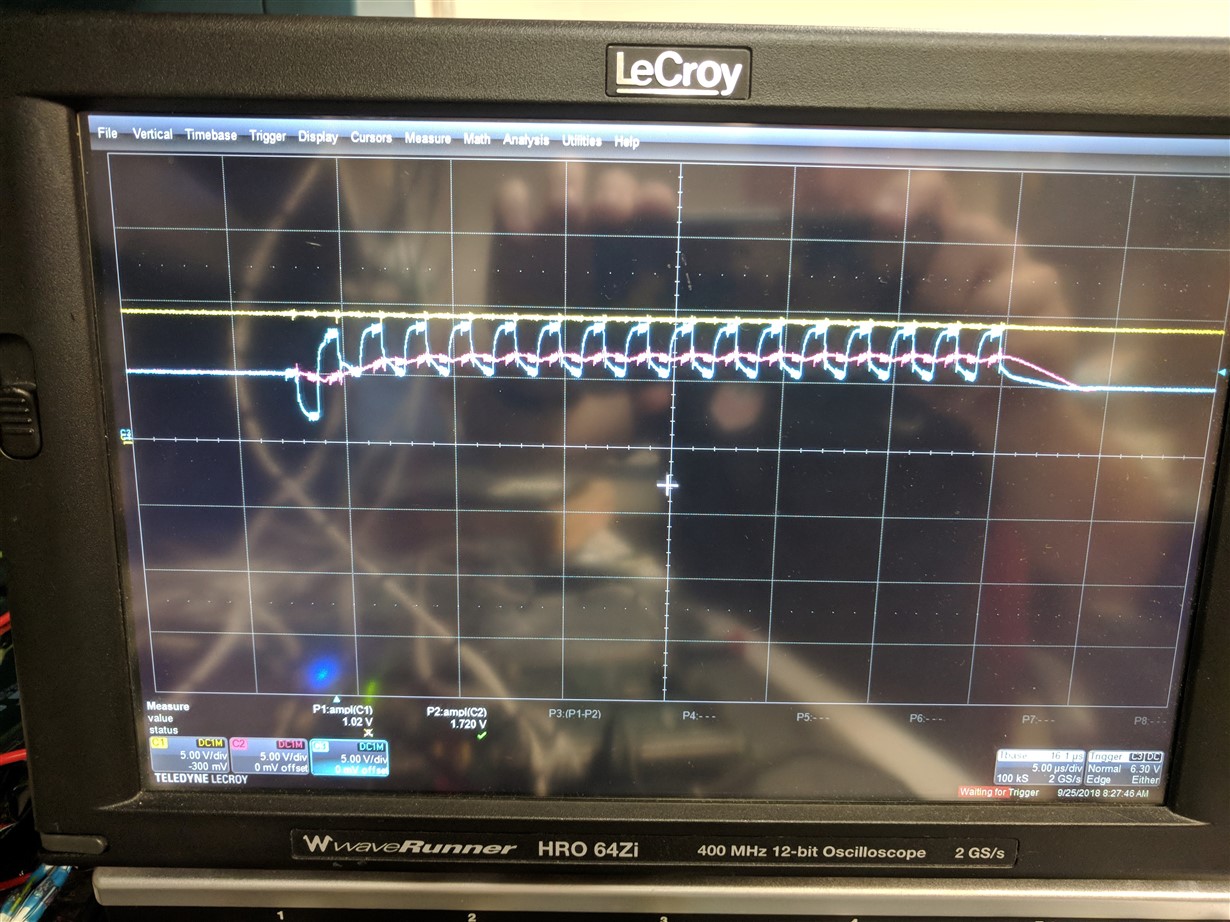Other Parts Discussed in Thread: OPA2277, OPA277, INA105, , OPA227, REF102
What is the current draw on the VREFH-F with a single 10V Ref when switching at Max Speed and Max code change (full range + to full range -) ?
We are using the OP AMP circuit from the datasheet (OPA2277 without the resistor/capacitor network) but it does not seem to be capable of sourcing the required current.
The current we measure is much higher than the datasheet's Figure 28.







